Angle Grinder Buying Guide
Angle Grinder Buying Guide
Introduction
Angle grinders are versatile tools to have in your toolbox, whether you’re an experienced DIYer or tradesperson. But they all look very similar, so it can be hard to know which one to buy.
This angle grinder buying guide will help you decide. It covers what an angle grinder is, how it works, and its uses. It lists the different types of angle grinders and discs and tells you which ones you need depending on the task and material being worked on. It also explains angle grinder features and power ratings and how to safely use an angle grinder. Finally, it highlights some key things to consider when buying an angle grinder and answers some frequently asked questions.
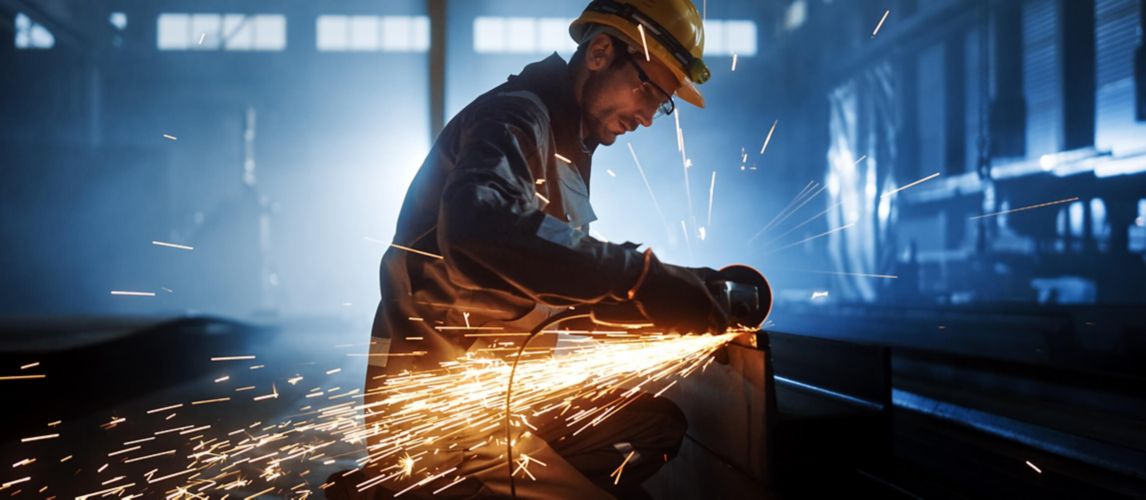
What is an Angle Grinder Used For?
An angle grinder is a handheld power tool primarily used for grinding, cutting, polishing and sanding various materials. But it can also be used for multiple metalwork jobs such as removing rust or adding a matte finish to a shiny surface using wire brushes. It's also ideal for sharpening blades using a specialist sharpening disc.
How Does an angle grinder work?
An angle grinder works by rotating a disc at very high speeds. Depending on the type of disc used, it can grind, cut, polish or sand.
Angle grinders all consist of the same main components: a rear handle with a trigger switch, motor and gearbox, side handle, disc (also called a wheel or head) and adjustable disc guard. Cordless angle grinders also have a battery pack.
The disc on an angle grinder sits at a 90° angle when the tool is held (hence its name). It’s connected to the angle grinder through a threaded spindle (or driver shaft) and is held in place by a clamping nut that’s removed using a pin spanner.
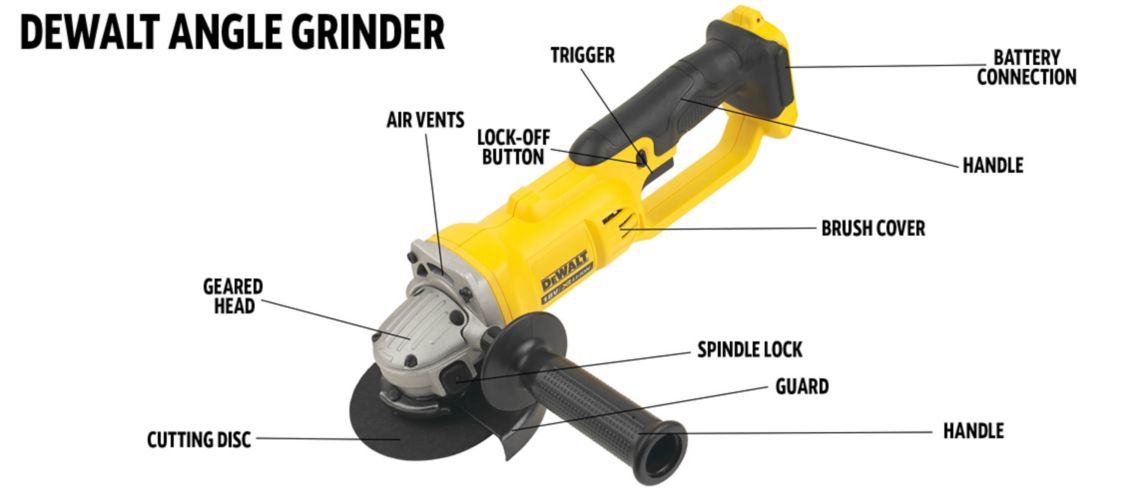
How to Choose an Angle Grinder?
When choosing an angle grinder, there are several factors to consider.
The most important factor is the type of tasks you'll be using it for. This will influence the size of the angle grinder you buy, its power rating, how portable it is and how easy it is to manoeuvre. For example, a big angle grinder takes bigger discs to make deeper cuts than a smaller one. A high-powered angle grinder is needed for working on dense materials. And it's easier to work up a ladder with a cordless angle grinder than a corded one.
Another consideration is how long you'll need to run the angle grinder for. If you plan to use it for prolonged periods, its weight and power rating are important. For example, you'll want one that's not too heavy. A higher power rating will help get the job done quicker. And a corded angle grinder will run for as long as you need it to.
Finally, consider how often you'll use the angle grinder. If it's for infrequent DIY use, you probably won't need as much power as a tradesperson who will use the tool frequently. And if you're a tradesperson, durability will be more important. Of course, your budget is also something to consider.
Corded or cordless?
Corded angle grinders plug into the mains electricity supply to work. This gives them unlimited running time and consistent power. They also tend to be lighter than cordless models and cheaper to buy. However, the cord means you need to be near a power supply to use them, so manoeuvrability and portability are hindered.
Another type of corded angle grinder is an air angle grinder. Instead of being plugged into the electricity, it's connected to an air compressor unit and works using air pressure. They are the lightest angle grinders available and are favoured by metalworkers as they are safe to use when moisture is present. They also have an instant start and stop function.
Cordless angle grinders are powered through a rechargeable battery. This makes them ideal to use where there's no power supply or when working up a ladder or on scaffolding. And there's no cord to get in the way while you work. On the downside, their battery capacity limits their run time, and they are more expensive and heavier than corded models.
Brushed or brushless?
Brushed angle grinders have a motor that’s driven by small metal brushes. Whereas brushless angle grinders have a motor with an electronic circuit board and sensor. The absence of brushes on a brushless motor means reduced friction and heat build-up and, therefore, less wear and tear, which gives them a long lifespan. Brushless motors are also more efficient to run than brushed motors.
Types of Angle Grinder
There are several types of angle grinders available, so it can be hard to know which one to buy. This angle grinder buying guide explains the different types and their uses to help you decide which angle grinder is best for your needs.
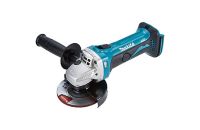
115mm angle grinders explained
115mm angle grinders are small angle grinders that use 115mm (4 ½") diameter discs and have a maximum cutting depth of 30mm. They are lighter than the larger versions and easy to manoeuvre, making them ideal for precision and finishing work, such as trimming tiles, sharpening blades and cutting or grinding intricate stone or metalwork. They are also suitable for deburring, sanding and polishing, although their small size means they are better for working on small areas.
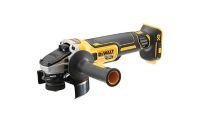
125mm angle grinders explained
125mm angle grinders are medium-sized angle grinders that use 125mm (5”) diameter discs and have a maximum cutting depth of 38mm. They are best used for regular small-scale work that involves cutting metal and other materials, grinding, deburring, sanding, polishing and sharpening.
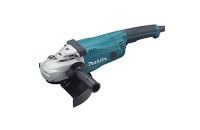
230mm angle grinders explained
230mm angle grinders are large angle grinders that use 230mm (9") diameter discs and have a maximum cutting depth of 70mm. They are heavier and bulkier than the smaller models but are more powerful. However, the more power they have, the slower they operate. They are most often used in the construction industry to cut dense metals, bricks and masonry and cut chases in walls. They can also be used to deburr, sand and grind down materials.mm angle grinders expla

Air angle grinders explained
Air angle grinders are the type of angle grinders that run on air pressure (supplied by an air compressor) instead of electricity or a battery. They are small and lightweight but difficult to manoeuvre due to the attached air hose. Different models take different sized discs, which can be 50mm (2"), 75mm (3"), 100mm (4") or 180mm (7"). They are mainly used by welders and metalworkers for precision cutting and grinding work.
Other types of angle grinders
The first is the straight die grinder. It works the same way as an angle grinder, except the disc is mounted in a straight line (i.e., the spindle and motor shaft are in-line with each other) rather than at a 90° angle. It's designed to be used in awkward areas where a standard angle grinder can't reach.
The second is the die grinder. It’s used to grind materials, but instead of using discs it uses a die that’s like a drill bit. Its small size makes it ideal for getting into tight spaces to grind materials or deburr rough metal edges.
Different Types of Angle Grinder Discs
The type of disc you use in an angle grinder is equally as important, if not more so than the type of angle grinder you use. This is because different discs are suitable for different tasks, and using the wrong one could lead to the disc shattering and injuring someone.
You also need to get the right-sized disc for your angle grinder – that's the diameter of the disc and the size of its bore hole (the hole in the centre of the disc that the angle grinder's spindle fits through).
This angle grinder buying guide explains the different types of angle grinder discs and their uses to help you choose which angle grinder disc is best for your needs.
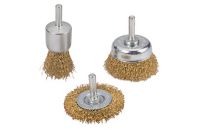
Cleaning and preparation discs are used for sanding and surface preparation tasks. Different types are available, such as wire discs to remove paint, rust and scale from metal and cleaning metal and stone. And refining discs for removing imperfections on metal surfaces.

Cutting discs are used for making fast and straight cuts in metal, plastic, wood, concrete, stone, ceramics and tiles. Different discs cut different materials, so always ensure you get the right one to suit the material.
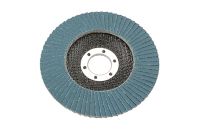
Flap discs are made from overlapping pieces of an abrasive material called zirconia alumina. They are used for grinding and sanding down metal and wood, providing a smooth finish. The flapped formation of the disc helps them last longer than standard metal grinding discs. There are various grit types available to obtain the smoothness required.
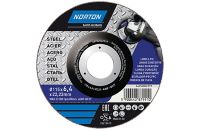
Grinding discs are suitable to grind away materials or strip paint and rust. They are available for use on stone or metal.
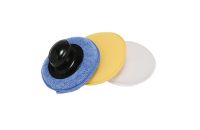
Polishing discs are used to polish and buff metal and paintwork. They are available in three densities: soft, medium or coarse, and lamb’s wool for more delicate work.
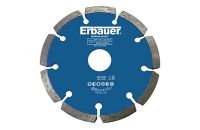
Mortar rakes come as discs or bits (similar to a drill bit) that fit directly onto the angle grinder’s spindle. They are used to remove mortar from in between bricks or masonry when repointing or weatherproofing properties.

Diamond blades are cutting blades with a high diamond concentration for fast, long-life cutting. They are suitable for cutting a range of tough masonry materials such as natural stone, concrete, reinforced concrete, engineering brick and granite. And there are diamond blades that can cut metals such as aluminium, stainless steel, steel and cast iron.
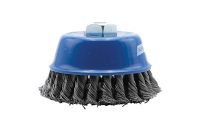
Brush cups are used for cleaning and preparation such as rust and paint removal.
What Angle Grinder and Disc to Cut Through Different Materials?
There are different types of blades for angle grinders that make it possible to cut through a variety of materials.
This section lists the best angle grinder and disc to use for different types of materials.
- Can you cut wood with an angle grinder?
It is not recommended to cut wood with an angle grinder.
- Can an angle grinder cut through concrete?
You can cut concrete to a depth of 30mm with a 115mm angle grinder, 38mm with a 125mm angle grinder or 70mm with a 230mm angle grinder. The best disc to use is a diamond blade, but you can also use a cutting disc.
- Can you cut granite with an angle grinder?
You can cut granite to a depth of 30mm with a 115mm angle grinder or 70mm with a 230mm angle grinder using a diamond blade.
- Can you cut tile with an angle grinder?
Using a cutting disc or diamond blade, you can cut tile with a 115mm angle grinder.
- Can an angle grinder cut stainless steel?
You can cut stainless steel to a depth of 30mm with a 115mm angle grinder, 38mm with a 125mm angle grinder or 70mm with a 230mm angle grinder using a cutting disc. Or you can use a diamond blade, but only with a 115mm angle grinder.
- Can you cut aluminium with an angle grinder?
You can cut aluminium to a depth of 30mm with a 115mm angle grinder, 38mm with a 125mm angle grinder or 70mm with a 230mm angle grinder using a cutting disc. Or you can use a diamond blade, but only with a 115mm angle grinder.
- Can you cut cast iron with an angle grinder?
You can cut cast iron to a depth of 30mm with a 115mm angle grinder using a diamond blade.
Angle Grinder Features Explained
When buying an angle grinder, there are various features and functions to look out for:
- Spindle lock
This feature locks the spindle in place to prevent it from rotating while the disc is changed. It helps to make disc removal and replacement quick and easy. - Auxiliary handle
An auxiliary handle is an extra handle attached to the side of an angle grinder to help make it easier to control. The handle is removable to allow you to get into tight spaces, and it can be attached on either side to suit right and left-handed users. - LED light signal
This LED light lights up to indicate that the angle grinder is overheating or if the circuit breaker is triggered. - Quick-change disc
An angle grinder with this feature uses quick change discs that can simply be twisted on and off, rather than having to remove a clamping nut with a tool. This is a useful feature to have if you switch discs frequently. - Anti-vibration handle
This feature reduces the amount of vibration felt through the handle to increase comfort, especially if it will be used for long periods. - Optimised coolant system
This feature is essential if you plan to use your angle grinder for prolonged periods. It helps to cool the engine down and prevent it from overheating. - Built-in dampening system
This is another feature that reduces the amount of vibration in an angle grinder. A vibration dampening system is built into the body of the angle grinder near the rear handle. - Vacuum attachment
This is an attachment that allows you to connect the angle grinder to a vacuum so it can suck up the debris as you cut or grind. It helps to keep the work area clean and prevents you from breathing in harmful particles. - Protective swivel guard
All angle grinders have this feature. It’s a safety guard that surrounds up to half of the disc that isn’t being used to cut or grind, preventing accidents. There are different guards depending on whether the angle grinder is used for grinding or cutting. For example, a grinding guard has an open bottom, whereas a cutting guard is enclosed on the top, side and bottom.

Power Ratings Explained
The power rating of an angle grinder is indicated by its wattage, and the wattage reflects the size of the disc it takes and how fast the disc rotates. Angle grinders are available with power ranges from 500-2500W and disc speeds of between 5,000-11,000 revolutions per minute (rpm). To decide on the best power rating for your needs, consider how regularly you’ll use it and whether it’s for occasional, regular, small scale or professional use.
Use the table below to help you decide:
|
Angle grinder type/disc size |
Average rotation speed |
Available power |
Intended usage |
|---|---|---|---|
|
115mm (4 ½ “) |
10,000-10,500rpm |
500-900W |
Occasional household use |
|
125mm (5”) |
10,000-11,000rpm |
700-1200W |
Regular small-scale use |
|
230mm (9”) |
6000rpm |
2000W |
Occasional large-scale use |
|
6000rpm |
2500W |
Regular professional use |
110V or 230V?
Electric angle grinders have a voltage rating as well as their wattage rating, but voltage has no bearing on power. Instead, the difference between 110V and 230V angle grinders is safety. A 230V angle grinder is safe to plug into a standard domestic socket, while a 110V angle grinder is used on construction sites, plugged into an isolating transformer. The transformer cuts the current in half, so workers are more likely to survive a 55V shock if the cable was accidentally cut.
Angle Grinder Safety
Angle grinders are powerful tools that are dangerous if appropriate care isn’t taken. Most angle grinders have built-in safety features, but they vary by model.
Safety features may include:
- A disc guard that prevents you from touching the side of the disc that isn't being used to cut or grind.
- A kickback brake that stops the disc from spinning if it hits resistance.
- A two-stage trigger, where you flip a safety switch before the trigger can start the tool.
- A kill switch that stops the disc from rotating in under two seconds.
- A circuit breaker trigger that cuts the power if there’s a power failure.
- A slow start function starts the rotation gradually before reaching maximum speed.
- Restart protection that prevents the tool from restarting if it has overheated or has cut out and been left on.
- A paddle switch (also called a dead man's switch) stops the angle grinder from rotating if it isn't held with two hands.
How to safely use an angle grinder
Here are some precautions you can take to reduce the risk of accidents while using an angle grinder:
- Wear protective clothing such as goggles, ear defenders, gloves and a dust mask.
- When using a corded angle grinder, ensure it’s switched off before plugging it in.
- Use the right disc for your task.
- Always use the safety guard.
- Always use two hands to control the angle grinder.
- Avoid distractions while using the angle grinder and take regular breaks.
Angle grinder maintenance
Proper care and maintenance of your angle grinder will increase its lifespan, prevent it from breaking down and ensure that it always performs well. There are a few simple things you can do:
- Always clean its internal and external surfaces before using it to ensure it's free from dirt and debris.
- Regularly grease the gears.
- Regularly check the brushes in a brushed motor and replace them when worn out.
- Throw away worn-out discs to prevent you from accidentally reusing them.
When you're not using the angle grinder, ensure it's stored in a safe place, away from children, unplugged, or with the battery detached on a cordless model. You can keep it in a dedicated carry case or on a storage rack.
Key Considerations When Buying an Angle Grinder
Here are a few more things to consider before buying an angle grinder:
-
How frequently and for what period of time will you use the angle grinder?
This is important to consider if you plan to use the angle grinder for long periods. Choose one with an ergonomic design so the handle is comfortable. And check the weight, as holding a heavy angle grinder for extended periods will be tiring. It's also worth opting for an angle grinder with an anti-vibration handle or a built-in dampening system, as this reduces the amount of vibration and makes it easier on your hands. -
What size angle grinder do I need?
The size of the angle grinder you need will depend on the task you are doing, how regularly you'll use it, and whether it's for occasional, regular, small scale, or professional use. As a guide, use a 115mm angle grinder for precision and finishing work or occasional household use. Use a 125mm angle grinder for regular small-scale tasks and a 230mm angle grinder for large-scale regular work or professional use. -
What power source and amp or wattage angle grinder do I need?
The power source and amp or wattage of angle grinder you need will depend on the tasks you are doing, how regularly you'll use it, and whether it's for occasional, regular, small scale, or professional use. As a guide, opt for a battery-powered angle grinder if portability is important or a corded one for prolonged use. An angle grinder with a power rating of 500-900W is suitable for occasional household use, 700-1200W is ideal for regular small-scale tasks, 2000W is best for large-scale regular jobs, and 2500W is best for professional use. -
What about speed settings?
Angle grinders are available with a single-speed setting or a variable speed setting. Single-speed angle grinders aren't as versatile as variable-speed grinders since different speeds are needed for different tasks and materials. However, variable-speed angle grinders can be used for a wider variety of jobs.
